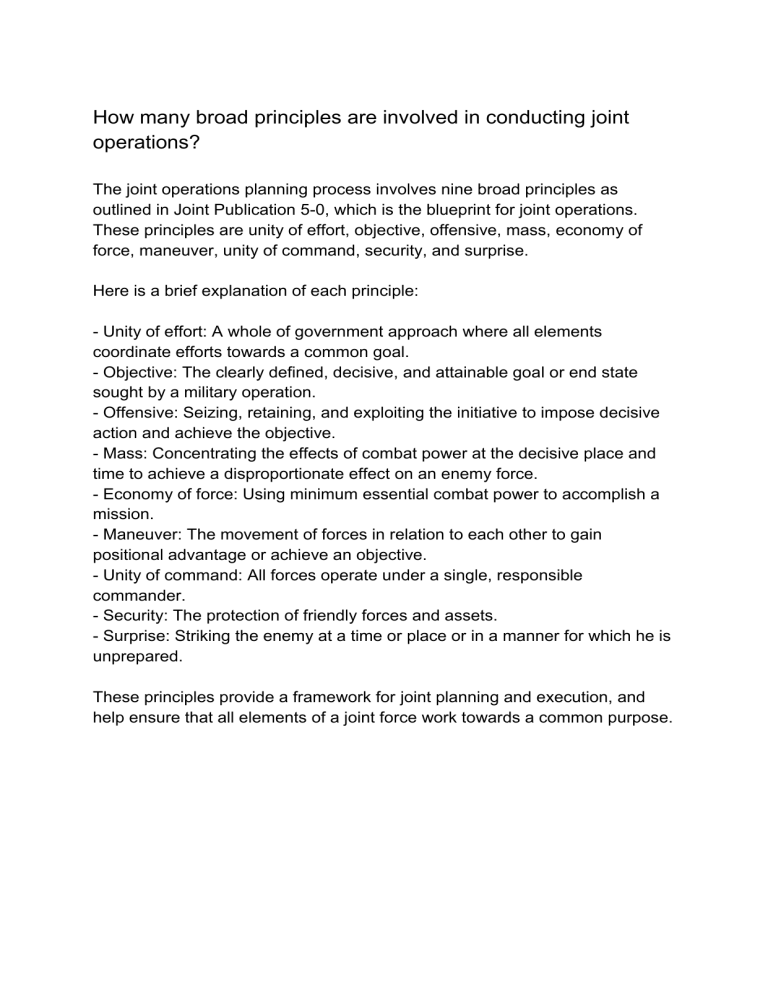How many broad principles are involved in conducting joint operations
advertisement

How many broad principles are involved in conducting joint operations? The joint operations planning process involves nine broad principles as outlined in Joint Publication 5-0, which is the blueprint for joint operations. These principles are unity of effort, objective, offensive, mass, economy of force, maneuver, unity of command, security, and surprise. Here is a brief explanation of each principle: - Unity of effort: A whole of government approach where all elements coordinate efforts towards a common goal. - Objective: The clearly defined, decisive, and attainable goal or end state sought by a military operation. - Offensive: Seizing, retaining, and exploiting the initiative to impose decisive action and achieve the objective. - Mass: Concentrating the effects of combat power at the decisive place and time to achieve a disproportionate effect on an enemy force. - Economy of force: Using minimum essential combat power to accomplish a mission. - Maneuver: The movement of forces in relation to each other to gain positional advantage or achieve an objective. - Unity of command: All forces operate under a single, responsible commander. - Security: The protection of friendly forces and assets. - Surprise: Striking the enemy at a time or place or in a manner for which he is unprepared. These principles provide a framework for joint planning and execution, and help ensure that all elements of a joint force work towards a common purpose.






